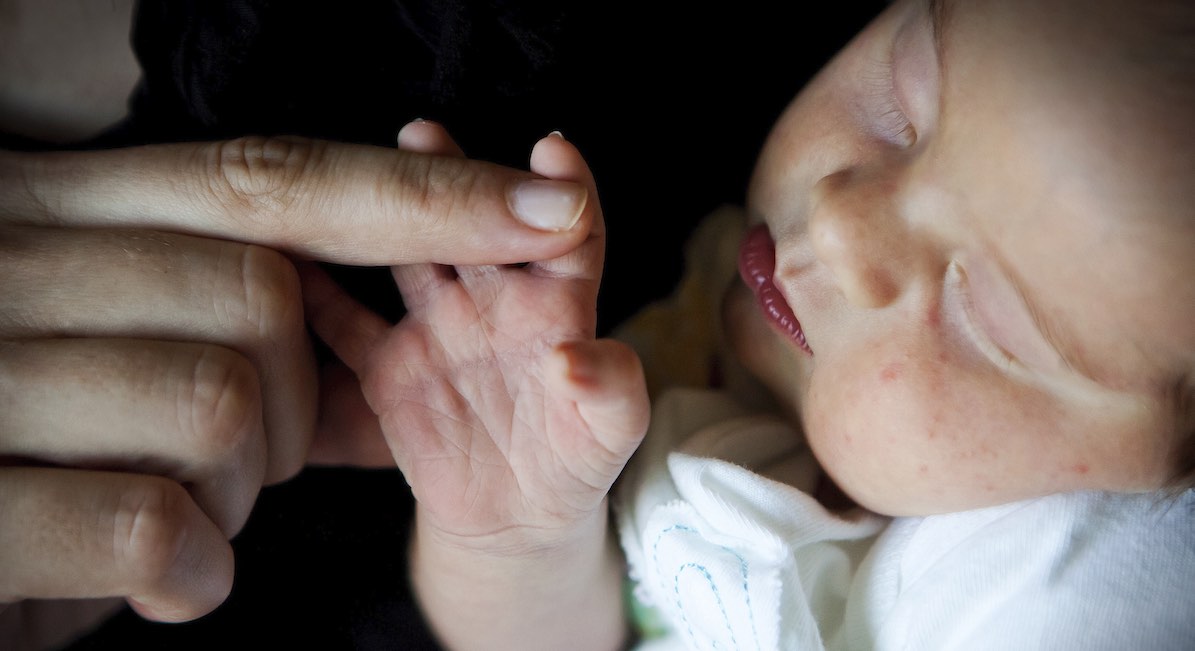A new study from Massachusetts General Hospital (MGH) found disturbing data about plummeting birth rates for babies with Down syndrome. Authored by Dr. Brian Skotko of MGH’s Down syndrome program, Gert de Graaf of the Dutch Down Syndrome Foundation, and Frank Buckley of Down Syndrome Education International, the study analyzed data from 2011 to 2015 from every country in Europe. The results are heartbreaking.
The researchers aimed to find out how many babies with Down syndrome were being born in each country, as well as the overall number of people with Down syndrome living in each country. “People with DS were being counted sporadically, inconsistently, or not at all, depending on the country,” Skotko said in a press release. “But without an accurate estimate, it’s impossible for policymakers and advocacy organizations to determine how many resources and support services are needed for its Down syndrome population.” For countries with gaps in the data, they used statistical modeling.
Part of the reason for the study was to determine a baseline for both birth rates and abortion rates for babies with Down syndrome before more countries in Europe roll out widespread non-invasive prenatal screenings (NIPS), sometimes referred to as non-invasive prenatal testing (NIPT); many European countries still do not publicly fund NIPS, but more and more are expected to in the near future.
“Countries that are grappling with funding decisions for NIPS should certainly be having deep discussions about its impact on the country’s Down syndrome population,” Skotko said, adding that adequate support and information are also needed for families who receive a Down syndrome diagnosis.
Overall, the researchers found that the number of Down syndrome births had fallen overall throughout Europe by 54%. In southern Europe (countries including Spain, Italy, Greece, and Monaco), the decrease in births was highest, at 71%. In northern Europe (home to countries such as Denmark, Finland, Norway, and Sweden), it dropped by 51%. Eastern Europe (countries including Russia, Poland, Slovakia, and Hungary), the birth rate decreased 38%. Each individual country was different. For example, Spain had the highest reduction in births at 83%, while the birth rate in Malta — considered one of the most pro-life countries in the world — hadn’t changed at all.
Skotko said each country’s individual religious and moral fabric made a difference, as did the availability of counseling for prenatal screenings, support networks, and opportunities for people with Down syndrome. “In the U.S., people with Down syndrome have great opportunities to get an education, to fall in love, and to find satisfying jobs,” he said, adding, “Massachusetts, for example, has an outstanding network of parents who are willing to talk about their lived experiences of raising children with Down syndrome to expectant couples. That nonprofit has trained parent groups in Brazil, Japan and elsewhere so they don’t have to reinvent the wheel.”
READ: ‘The Atlantic’ stops short of condemning eugenic Down syndrome abortions
Many countries in Europe have extremely high abortion rates for babies with Down syndrome, and put pressure on mothers to abort after a positive diagnosis. In Denmark, just 18 babies with Down syndrome were born in 2019. Iceland made international headlines after announcing its nearly 100% abortion rate for babies with Down syndrome. Nearly every abortion in Poland was due to disability. Women in the Netherlands are told they have a “moral duty” to abort if their babies have Down syndrome.
This widespread ableism is an endemic issue in Europe, and it is sentencing people to death simply because they’re seen as “less than.” The abortion of babies with Down syndrome is nothing less than a slow-motion genocide, happening right under people’s noses, with few willing to speak out against it.
“Like” Live Action News on Facebook for more pro-life news and commentary!







